Study of the Influence of Nonlinear Dynamic Loads on Elastic Modulus of Carbonate Reservoir Rocks
Abstract
:1. Introduction
2. Preparation and Description of Carbonate Reservoir Rock Samples
2.1. Preparation of Samples
2.2. Macroscopic Description
2.3. Microscopic Description
3. Quasi-Static Loading
3.1. Measurements of Transversal Deformations with a Mechanical Extensometer and a Vic-3D System
3.2. Acoustic Emission Study
4. Dynamic Loading
4.1. Description of the Dynamic Experiment
4.2. Description of the Dynamic Loading Technique
4.3. Data Processing
5. Results of Dynamic Loading
5.1. Dependence of an Elasticity Modulus on the Dynamic Load Frequency
5.2. Discussion
6. Conclusions
- The frequency of the dynamic load applied to the top end of the specimen has a significant impact on the dynamic Young’s modulus which is connected to a higher strain rate. The obtained results can be used for better understanding and optimization of bit-rock interaction since it is shown that during dynamic impact loading (bit bounce) the rock hardens.
- A nonlinear nature of the dynamic Young’s modulus of a carbonate rock was revealed at the frequency ranging from 0.1 to 60 Hz. It was found that with an increase in the frequency from 0.1 to 10 Hz and from 10 to 60 Hz dynamic Young’s modulus rises according to a logarithmic and then to power law for each value of loading amplitudes.
- With an increase in the strain rate the amplitude of the strain decreases. One of the possible reasons for this phenomenon is that under the higher strain rates the rock gets stiffer in comparison with rock subjected to smaller strain rate dynamic loading.
- Despite the effect of water on mechanical properties of specimens determined during quasi-static testing, there were no significant change in dynamic Young’s modulus observed during nonlinear dynamic loading.
Author Contributions
Funding
Institutional Review Board Statement
Informed Consent Statement
Data Availability Statement
Conflicts of Interest
References
- Deng, J.; Liu, C.; Liu, J. Effect of dynamic loading on mechanical properties of concrete. Adv. Mat. Res. 2012, 568, 147–153. [Google Scholar] [CrossRef]
- Redmann, A.; Montoya-Ospina, M.C.; Karl, R.; Rudolph, N.; Osswald, T.A. High-force dynamic mechanical analysis of composite sandwich panels for aerospace structures. Compos. Part C Open Access 2021, 5, 100136. [Google Scholar] [CrossRef]
- Tang, B.; Ren, Y. Study on Seismic Response and Damping Measures of Surrounding Rock and Secondary Lining of Deep Tunnel. Shock Vib. 2021, 2021, 7824527. [Google Scholar] [CrossRef]
- Xu, J.; Kang, Y.; Liu, F.; Liu, Y.; Wang, Z.; Wang, X. Mechanical properties and fracture behavior of flawed granite under dynamic loading. Soil Dyn. Earthq. Eng. 2021, 142, 106569. [Google Scholar] [CrossRef]
- Dong, L.-X.; Wang, S.-H. Research on dynamic characteristic of marine shafting-oil film-stern structure system. J. Dyn. Syst. Meas. Control Trans. ASME 2019, 141, 021001. [Google Scholar] [CrossRef]
- Zhang, S.; Caprani, C. Mechanical properties of pultruded GFRP at intermediate strain rates. Compos. Struct. 2021, 278, 114699. [Google Scholar] [CrossRef]
- Nguyen, K.-L.; Tran, Q.-T.; Andrianoely, M.-A.; Manin, L.; Baguet, S.; Dufour, R.; Mahjoub, M.; Menand, S. Nonlinear rotordynamics of a drillstring in curved wells: Models and numerical techniques. Int. J. Mech. Sci. 2020, 166, 105225. [Google Scholar] [CrossRef] [Green Version]
- Kamel, J.M.; Yigit, A.S. Modeling and analysis of stick-slip and bit bounce in oil well drillstrings equipped with drag bits. J. Sound Vib. 2014, 333, 6885–6899. [Google Scholar] [CrossRef]
- Yigit, A.S.; Christoforou, A.P. Stick-Slip and Bit-Bounce Interaction in Oil-Well Drillstrings. J. Energy Res. Technol. 2006, 128, 268. [Google Scholar] [CrossRef]
- Fushen, R.; Baojin, W. Modeling and analysis of stick-slip vibration and bit bounce in drillstrings. J. Vibroengineering 2017, 19, 4866–4881. [Google Scholar] [CrossRef]
- Wiercigroch, M.; Vaziri, V.; Kapitaniak, M. RED: Revolutionary Drilling Technology for Hard Rock Formations. In Proceedings of the Society of Petroleum Engineers—IADC/SPE Drilling Conference and Exhibition 2017: SPE/IADC Drilling Conference and Exhibition, The Hague, The Netherlands, 14–16 March 2017; Society of Petroleum Engineers (SPE). pp. 1234–1241. [Google Scholar] [CrossRef]
- Qi, X.; Chen, W.; Liu, Y.; Tang, X.; Shi, S. A Novel Well Drill Assisted with High-Frequency Vibration Using the Bending Mode. Sensors 2018, 18, 1167. [Google Scholar] [CrossRef] [PubMed] [Green Version]
- Zhang, Q.B.; Zhao, J. A Review of Dynamic Experimental Techniques and Mechanical Behaviour of Rock Materials. Rock Mech. Rock Eng. 2014, 47, 1411–1478. [Google Scholar] [CrossRef] [Green Version]
- Xu, Y.; Zhang, H.; Guan, Z. Dynamic Characteristics of Downhole Bit Load and Analysis of Conversion Efficiency of Drill String Vibration Energy. Energies 2021, 14, 229. [Google Scholar] [CrossRef]
- Zheng, J.; Dou, B.; Li, Z.; Wu, T.; Tian, H.; Cui, G. Design and Analysis of a While-Drilling Energy-Harvesting Device Based on Piezoelectric Effect. Energies 2021, 14, 1266. [Google Scholar] [CrossRef]
- Peng, K.; Zhou, J.; Zou, Q.; Song, X. Effect of loading frequency on the deformation behaviours of sandstones subjected to cyclic loads and its underlying mechanism. Int. J. Fatigue 2020, 131, 105349. [Google Scholar] [CrossRef]
- Bijay, K.C.; Foroutan, M.; Ghazanfari, E. Analysis and Comparison of Measured Static and Dynamic Moduli of a Dolostone Specimen. Geotech. Spec. Publ. 2019, 2019, 484–493. [Google Scholar] [CrossRef]
- Zheng, Q.; Liu, E.; Sun, P.; Liu, M.; Yu, D. Dynamic and damage properties of artificial jointed rock samples subjected to cyclic triaxial loading at various frequencies. Int. J. Rock Mech. Min. Sci. 2020, 128. [Google Scholar] [CrossRef]
- Jafari, M.K.; Pellet, F.; Boulon, M.; Hosseini, K.A. Experimental Study of Mechanical Behaviour of Rock Joints Under Cyclic Loading. Rock Mech. Rock Eng. 2004, 37, 3–23. [Google Scholar] [CrossRef]
- Van Massenhove, K.; Debruyne, S.; Vandepitte, D. Variability analysis on the structural elastic properties of adhesively joined cylinders. J. Phys. Conf. Ser. 2016, 744. [Google Scholar] [CrossRef]
- Xia, K.; Yao, W.; Wu, B. Dynamic rock tensile strengths of Laurentian granite: Experimental observation and micromechanical model. J. Rock Mech. Geotech. Eng. 2017, 9, 116–124. [Google Scholar] [CrossRef]
- Liu, X.; Dai, F.; Liu, Y.; Pei, P.; Yan, Z. Experimental investigation of the dynamic tensile properties of naturally saturated rocks using the coupled static–dynamic flattened brazilian disc method. Energies 2021, 14, 4784. [Google Scholar] [CrossRef]
- Meng, L.; Han, L.; Meng, Q.; Liu, K.; Tian, M.; Zhu, H. Study on characteristic and energy of argillaceous weakly cemented rock under dynamic loading by Hopkinson bar experiment. Energies 2020, 13, 3215. [Google Scholar] [CrossRef]
- Pimienta, L.; Fortin, J.; Guéguen, Y. Bulk modulus dispersion and attenuation in sandstones. Geophysics 2015, 80, D111–D127. [Google Scholar] [CrossRef]
- Lozovyi, S.; Bauer, A. Static and dynamic stiffness measurements with Opalinus Clay. Geophys. Prospect. 2019, 67, 997–1019. [Google Scholar] [CrossRef]
- Holt, R.M.; Lozovyi, S.; Pohl, M.; Szewczyk, D. Frequency-dependent wave velocities in sediments and sedimentary rocks: Laboratory measurements and evidences. Lead. Edge 2016, 35, 474–560. [Google Scholar] [CrossRef] [Green Version]
- Borgomano, J.V.M.; Gallagher, A.; Sun, C.; Fortin, J. An apparatus to measure elastic dispersion and attenuation using hydrostatic- and axial-stress oscillations under undrained conditions. Rev. Sci. Instrum. 2020, 91, 034502. [Google Scholar] [CrossRef] [PubMed]
- Guzev, M.A.; Kozhevnikov, E.V.; Turbakov, M.S.; Riabokon, E.P.; Poplygin, V.V. Experimental studies of the influence of dynamic loading on the elastic properties of sandstone. Energies 2020, 13, 6195. [Google Scholar] [CrossRef]
- Spencer Jr, J.W. Stress relaxations at low frequencies in fluid-saturated rocks: Attenuation and modulus dispersion. J. Geophys. Res. 1981, 86, 1803–1812. [Google Scholar] [CrossRef]
- Szewczyk, D.; Bauer, A.; Holt, R.M. A new laboratory apparatus for the measurement of seismic dispersion under deviatoric stress conditions. Geophys. Prospect. 2016, 64, 789–798. [Google Scholar] [CrossRef] [Green Version]
- Mikhaltsevitch, V.; Lebedev, M.; Gurevich, B. A laboratory study of the elastic and anelastic properties of the sandstone flooded with supercritical CO2 at seismic frequencies. Energy Procedia 2014, 63, 4289–4296. [Google Scholar] [CrossRef] [Green Version]
- ASTM D4543: Standard Practices for Preparing Rock Core Specimens and Determining Dimen-Sional and Shape Tolerances; American Society for Testing and Materials International: West Conshohocken, PA, USA, 2001.
- Recommended Practices for Core Analysis. Recommended Practice 40, 2nd ed.; American Petroleum Institute: Washington, DC, USA, 1998. [Google Scholar]
- ASTM D7012-14e1, Standard Test Methods for Compressive Strength and Elastic Moduli of Intact Rock Core Specimens under Varying States of Stress and Temperatures; ASTM International: West Conshohocken, PA, USA, 2014.
- Fujii, Y.; Kiyama, T.; Ishijima, Y.; Kodama, J. Examination of a rock failure criterion based on circumferential tensile strain. Pure Appl. Geophys. 1998, 152, 551–577. [Google Scholar] [CrossRef]
- Zhang, H.; Nath, F.; Parrikar, P.N.; Mokhtari, M. Analyzing the validity of Brazilian testing using digital image correlation and numerical simulation techniques. Energies 2020, 13, 1441. [Google Scholar] [CrossRef] [Green Version]
- Chen, C.; Xu, J.; Okubo, S.; Peng, S. Damage evolution of tuff under cyclic tension–compression loading based on 3D digital image correlation. Eng. Geol. 2020, 275, 105736. [Google Scholar] [CrossRef]
- Štambuk Cvitanović, N.; Nikolić, M.; Ibrahimbegović, A. Influence of specimen shape deviations on uniaxial compressive strength of limestone and similar rocks. Int. J. Rock Mech. Min. Sci. 2015, 80, 357–372. [Google Scholar] [CrossRef]
- Sirdesai, N.N.; Gupta, T.; Singh, T.N.; Ranjith, P.G. Studying the acoustic emission response of an Indian monumental sandstone under varying temperatures and strains. Constr. Build. Mater. 2018, 168, 346–361. [Google Scholar] [CrossRef]
- Tutuncu, A.N.; Podio, A.L.; Gregory, A.R.; Sharma, M.M. Nonlinear viscoelastic behavior of sedimentary rocks, Part I: Effect of frequency and strain amplitude. Geophysics 1998, 63, 184–194. [Google Scholar] [CrossRef]
- Guzev, M.; Riabokon, E.; Turbakov, M.; Kozhevnikov, E.; Poplygin, V. Modelling of the dynamic Young’s modulus of a sedimentary rock subjected to nonstationary loading. Energies 2020, 3, 6461. [Google Scholar] [CrossRef]
- Jaeger, J.C.; Cook, N.G.W.; Zimmerman, R.W. Laboratory testing of rocks. In Fundamentals of Rock Mechanics, 4th ed.; Blackwell Publishing: Malden, MA, USA, 2007; pp. 145–167. [Google Scholar]
- Qi, C.Z.; Li, K.R.; Bai, J.P.; Chanyshev, A.I.; Liu, P. Strain gradient model of zonal disintegration of rock mass near deep-level tunnels. J. Min. Sci. 2017, 53, 21–33. [Google Scholar] [CrossRef]
- Lavrikov, S.V.; Revuzhenko, A.F. Mathematical Modeling of Deformation of Self-Stress Rock Mass Surrounding a Tunnel. In Desiderata Geotechnica; Springer: Cham, Switzerland, 2019; pp. 79–85. [Google Scholar] [CrossRef]



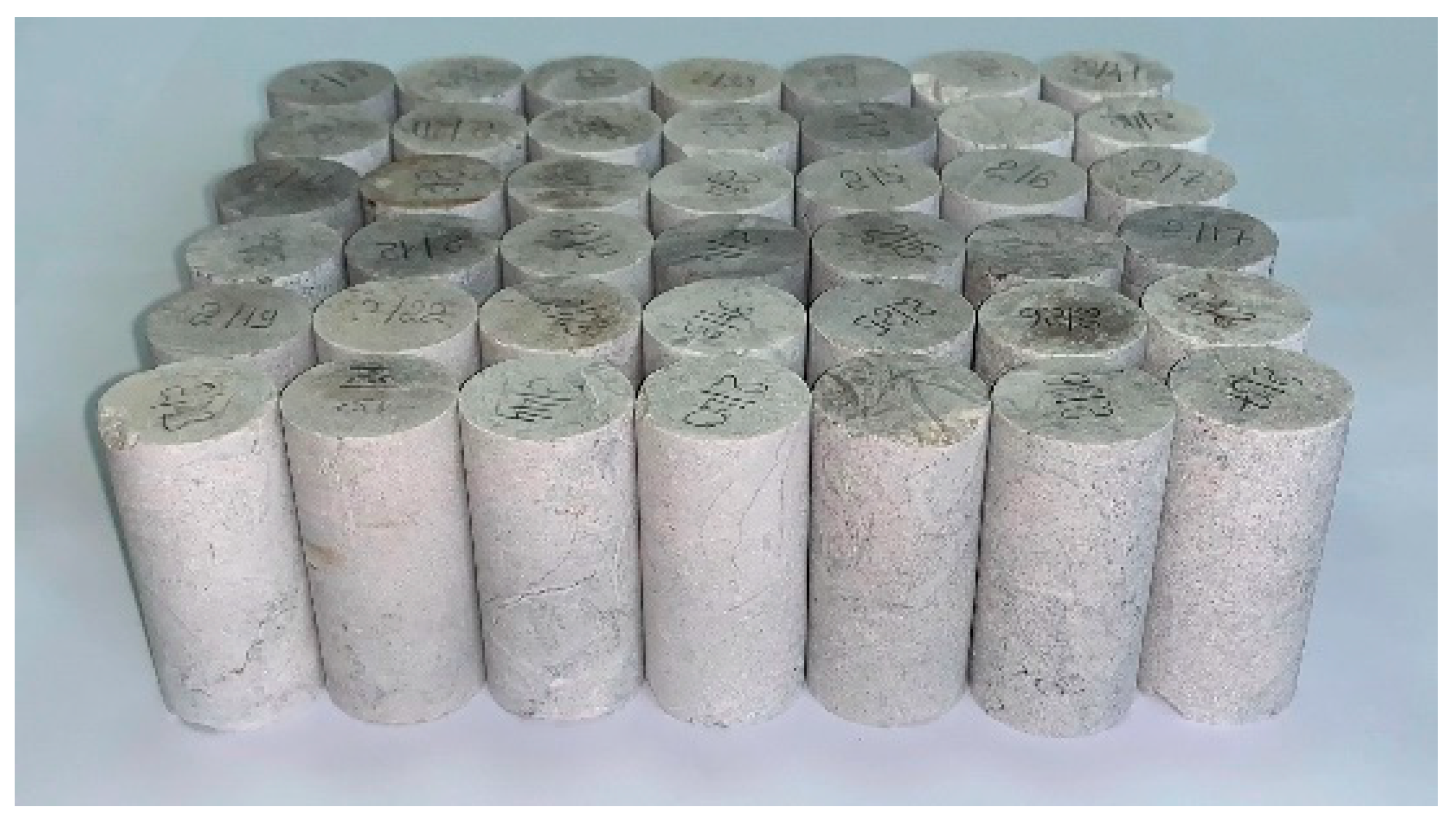
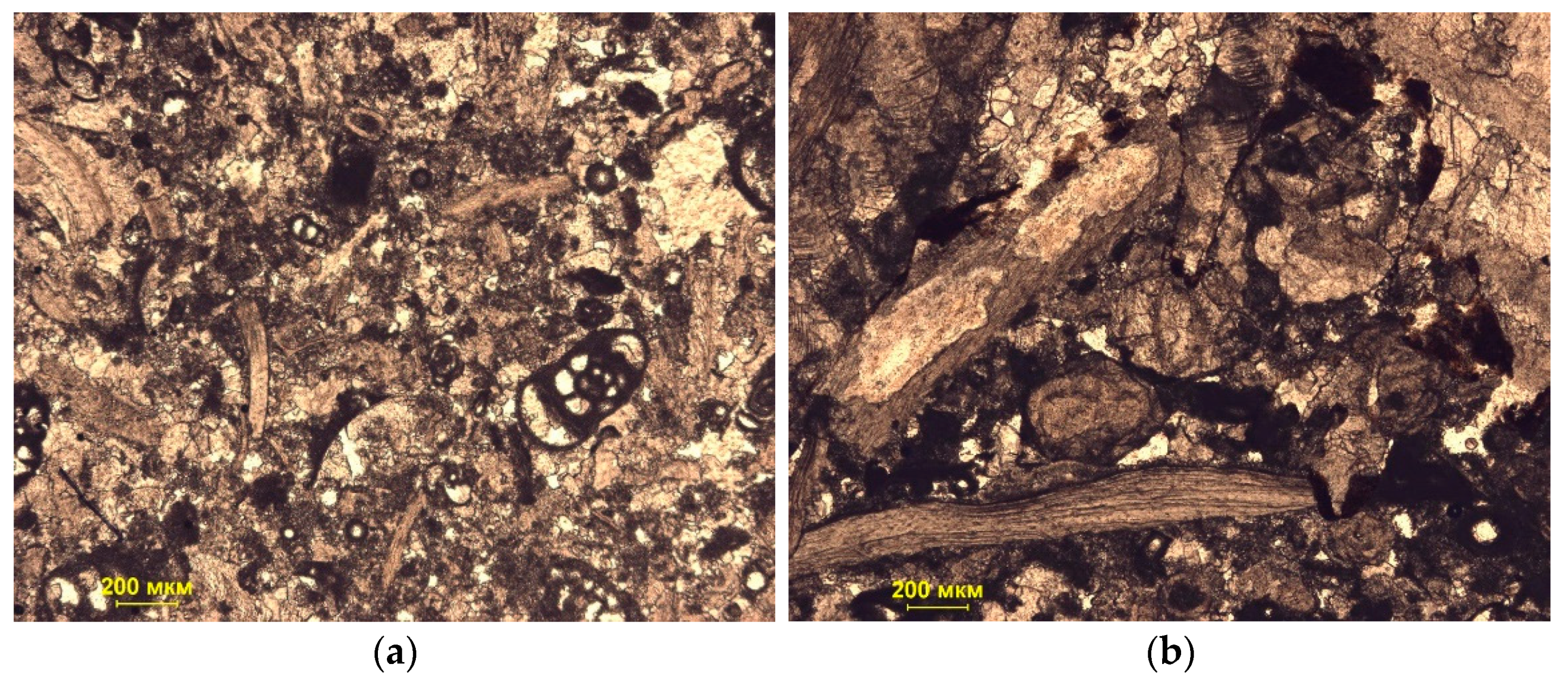
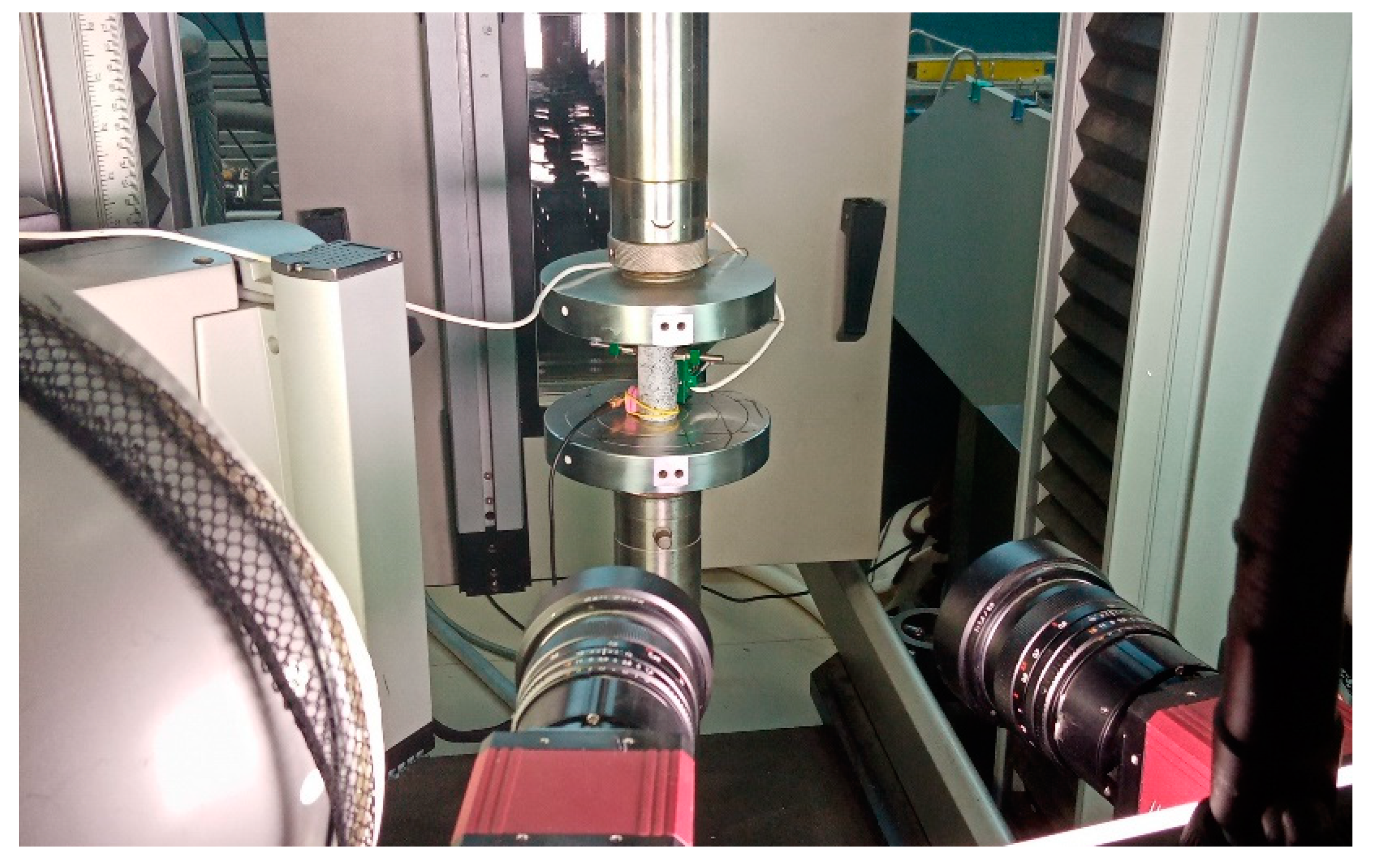
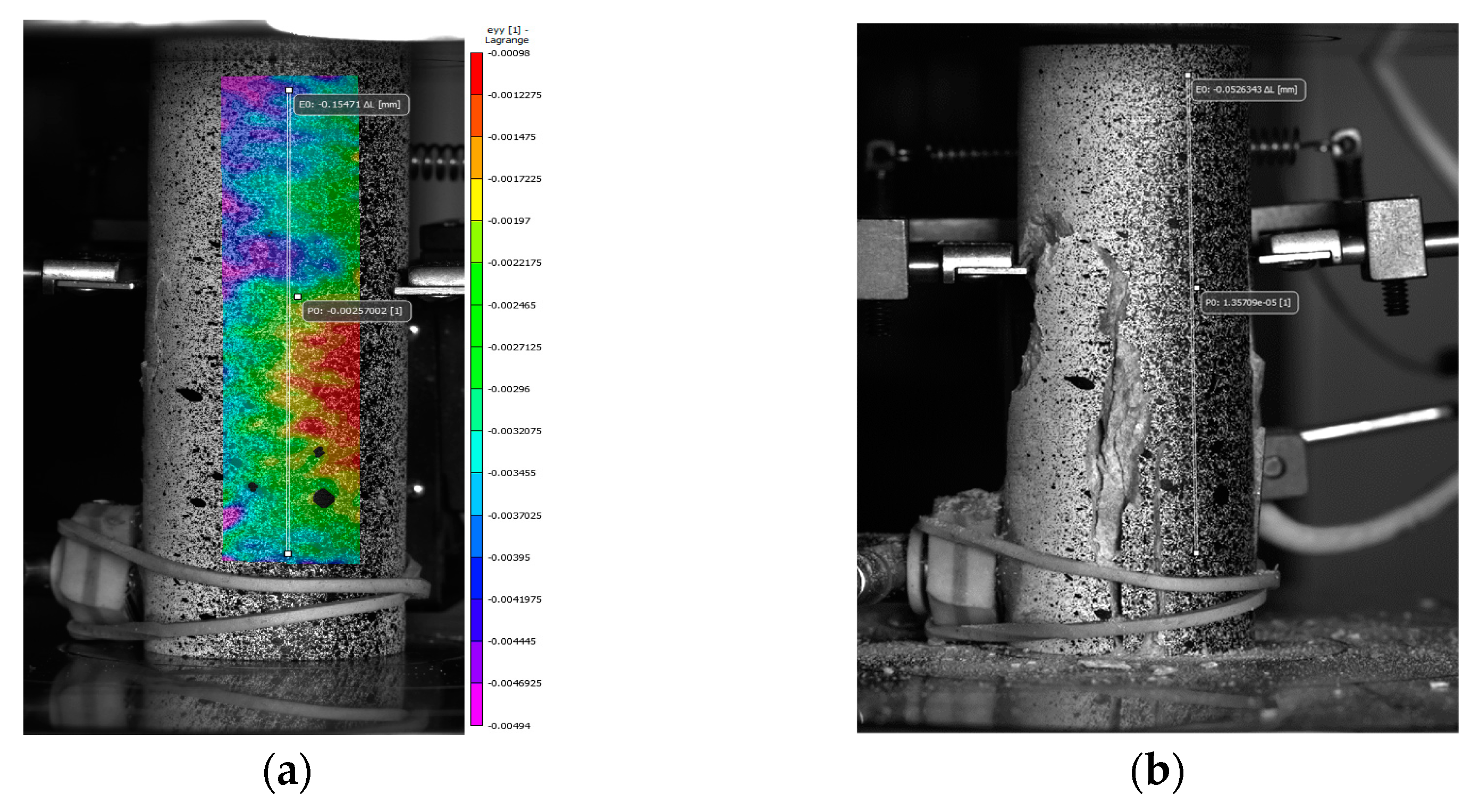


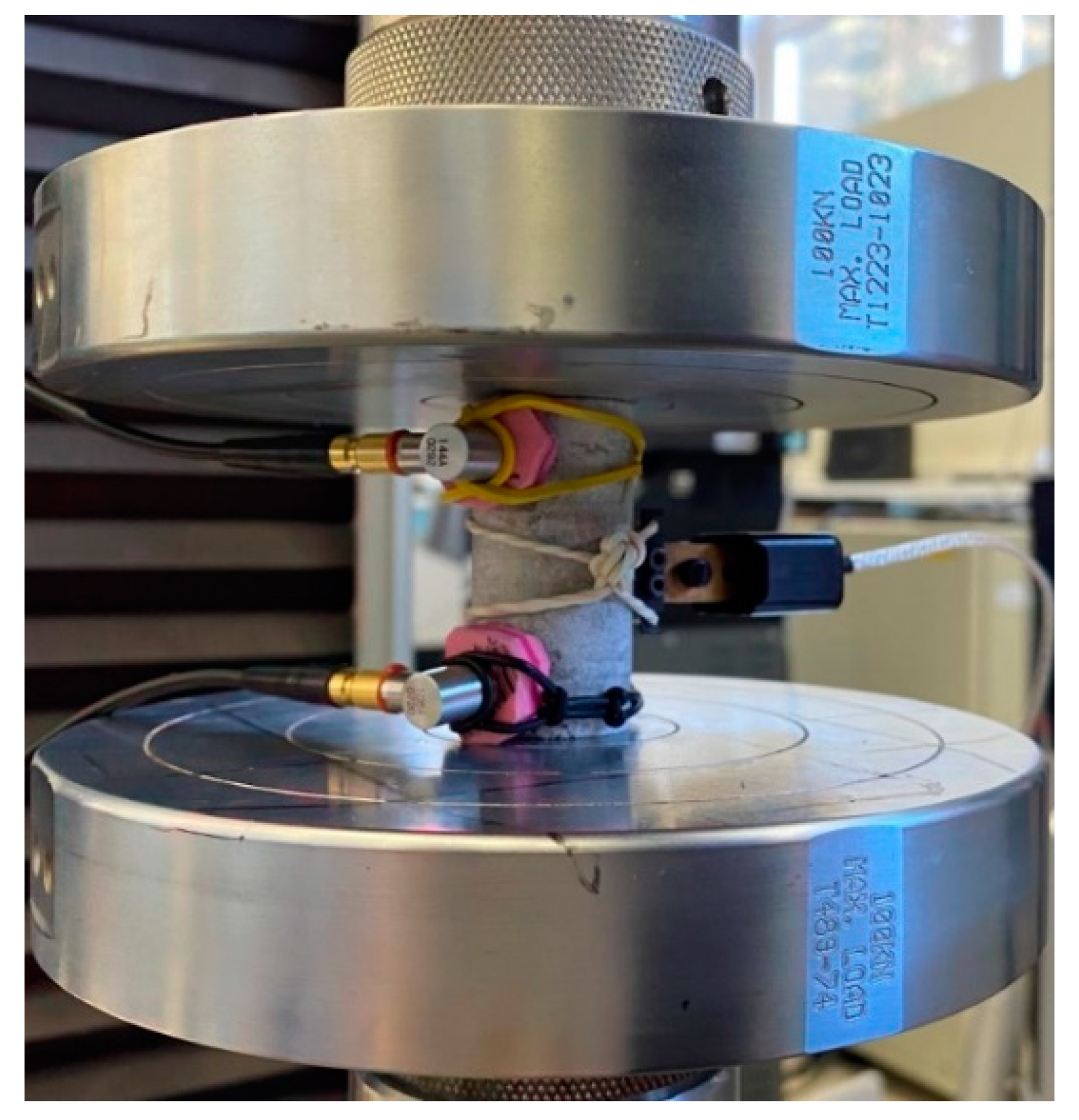
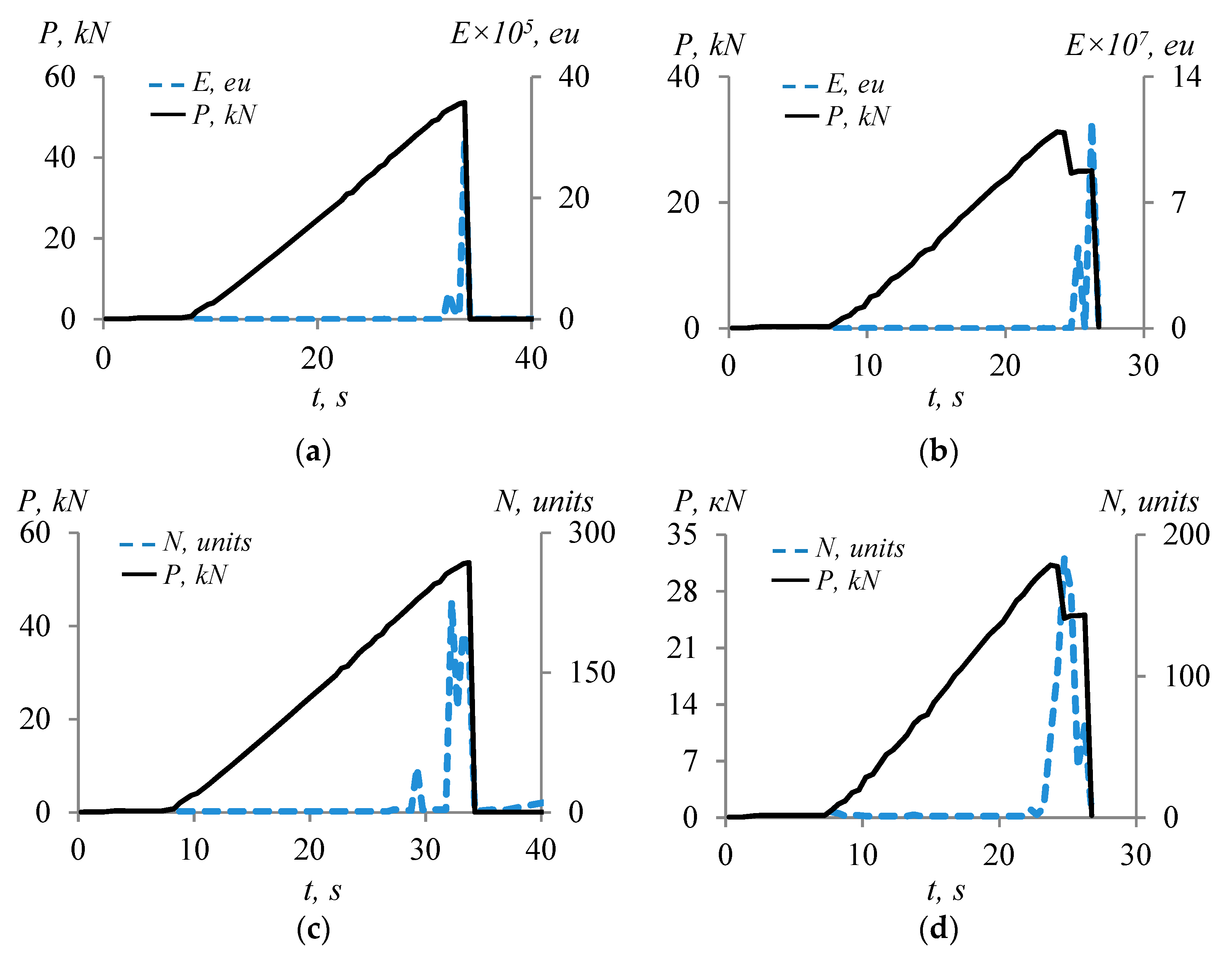
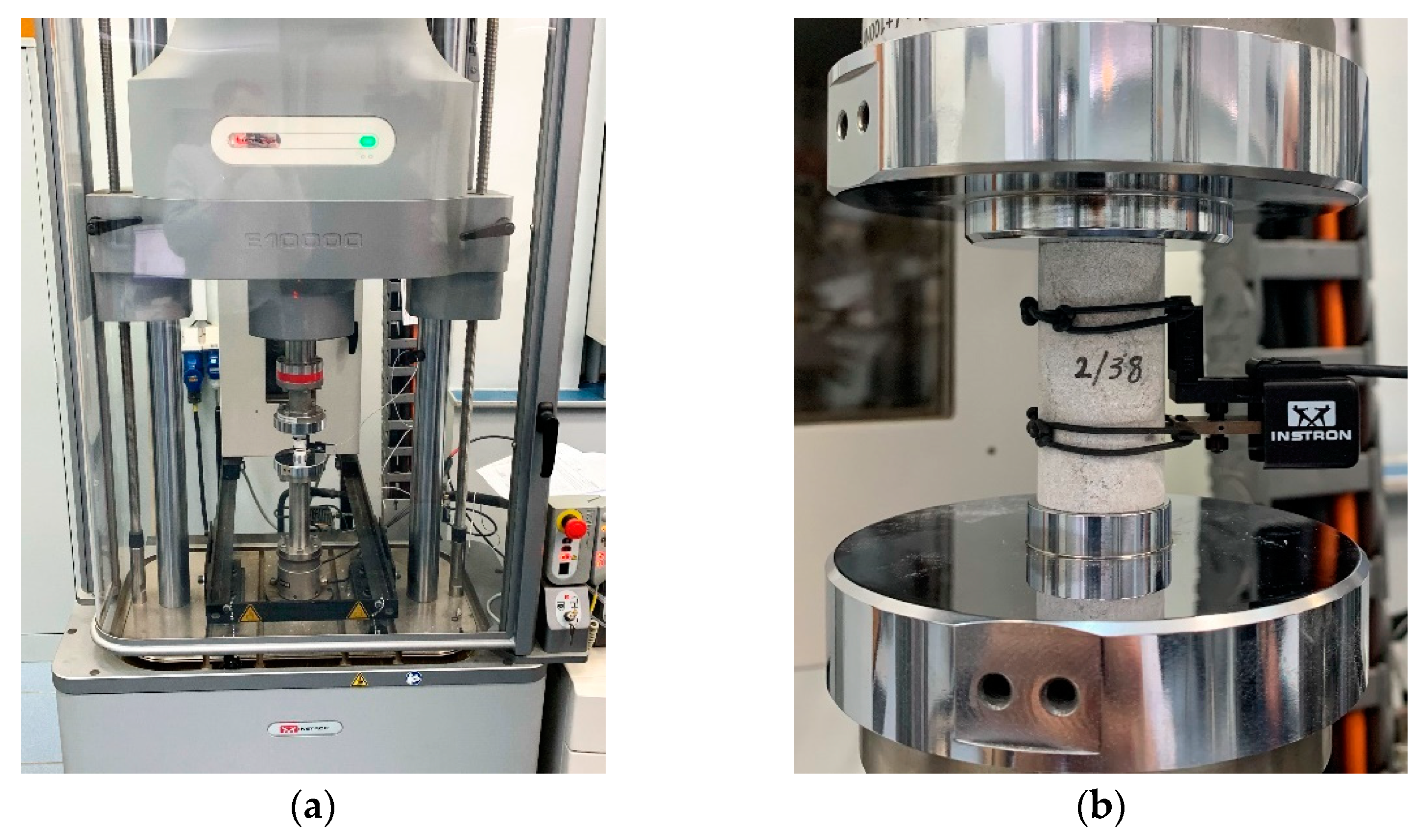
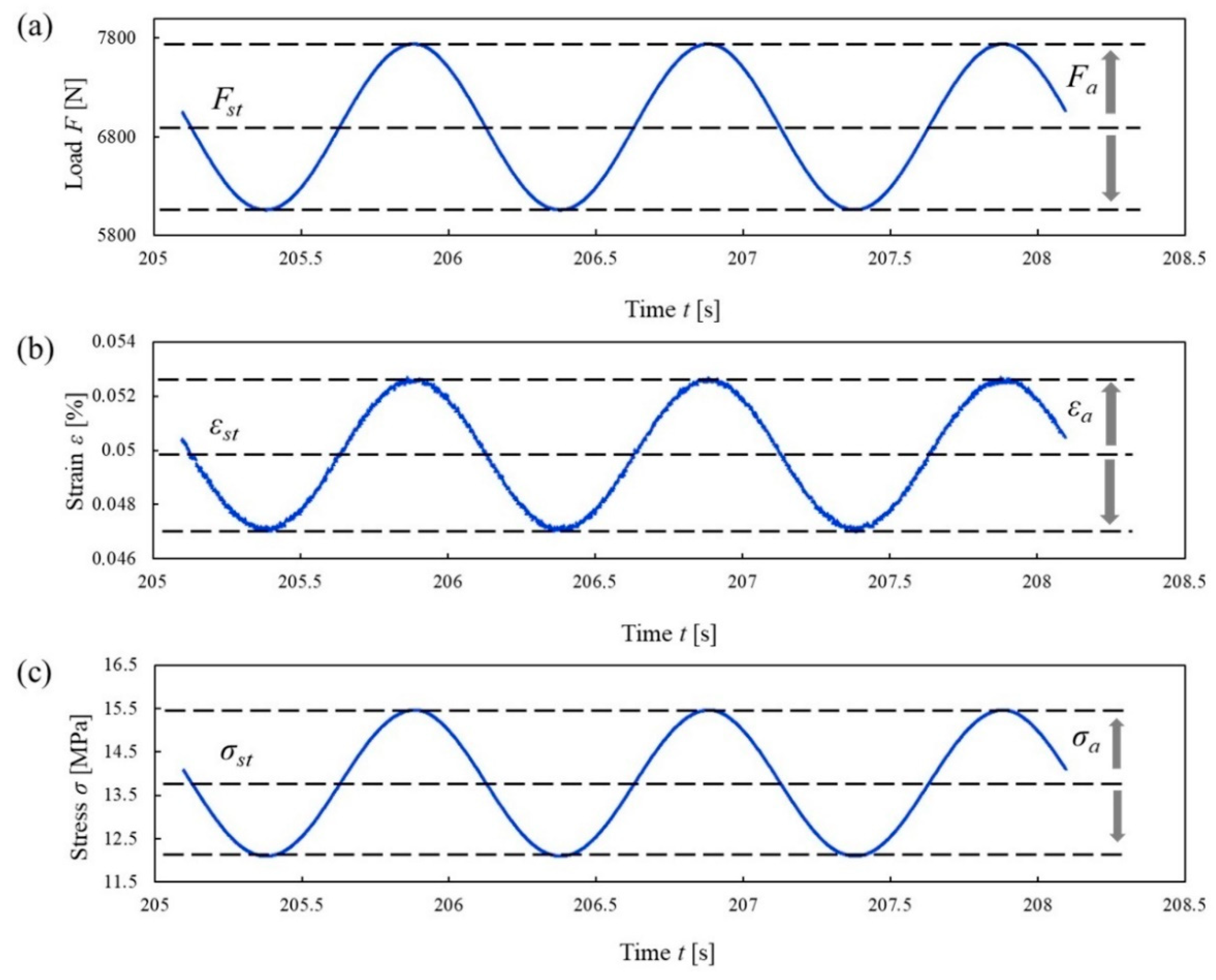


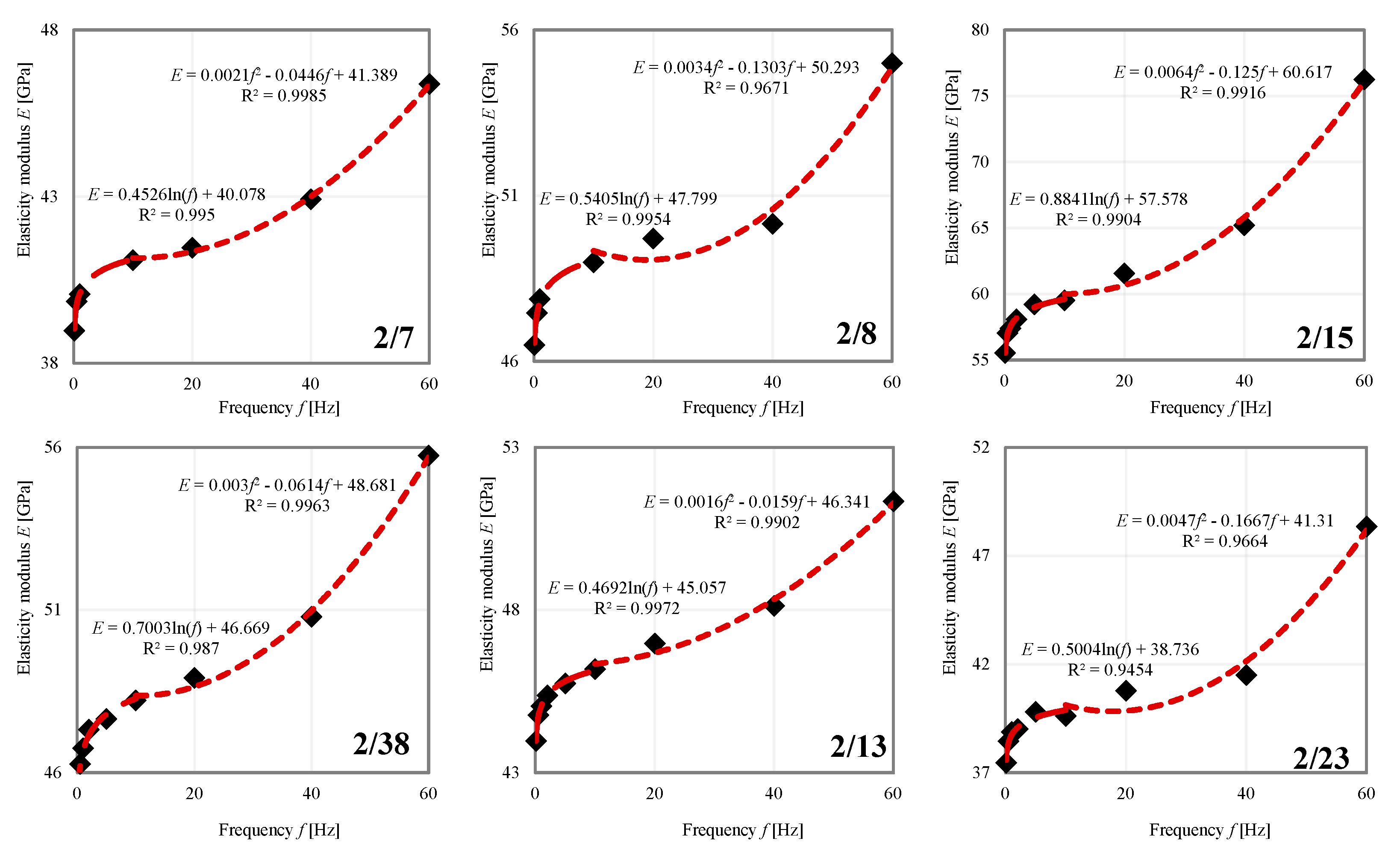
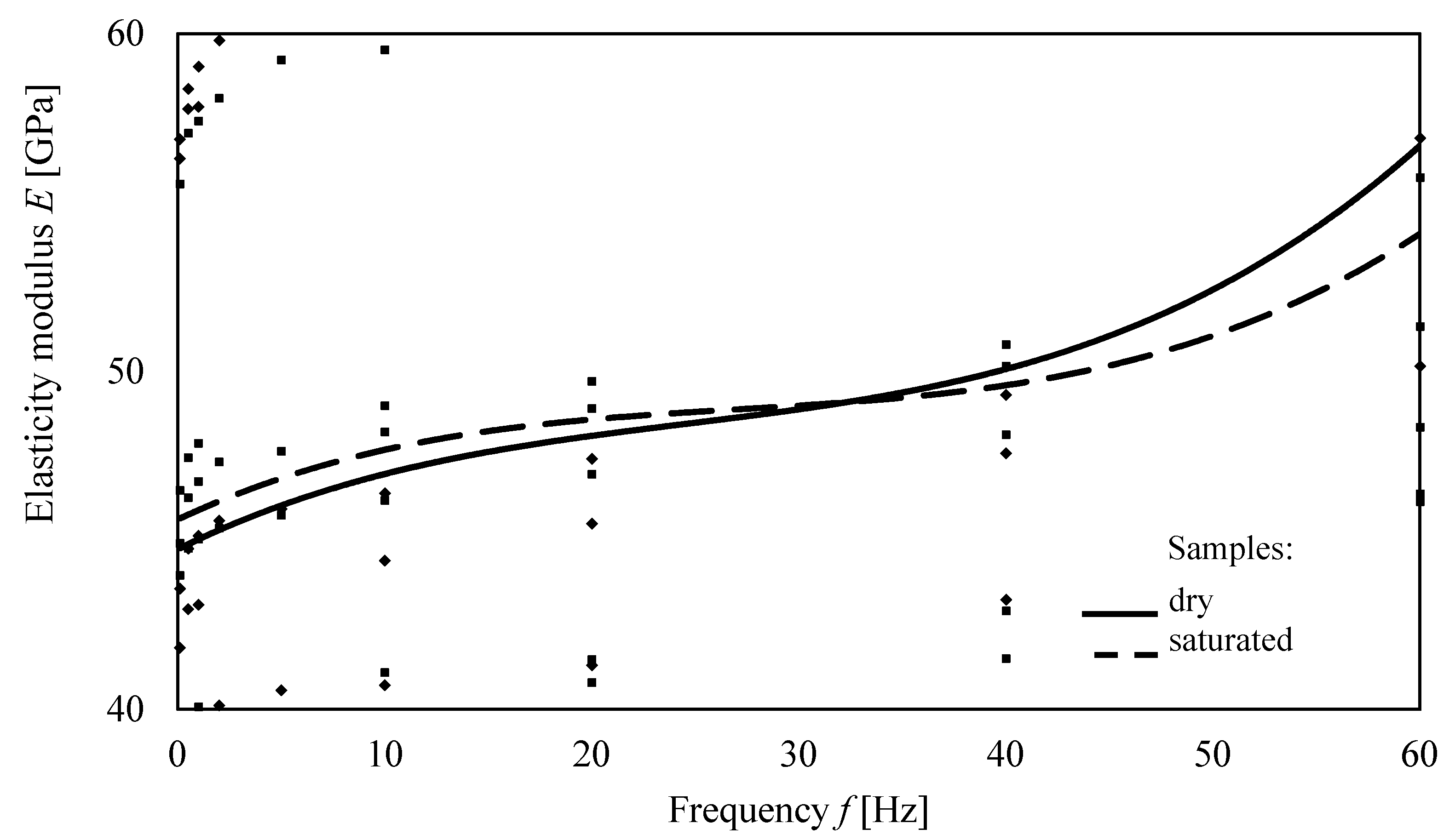


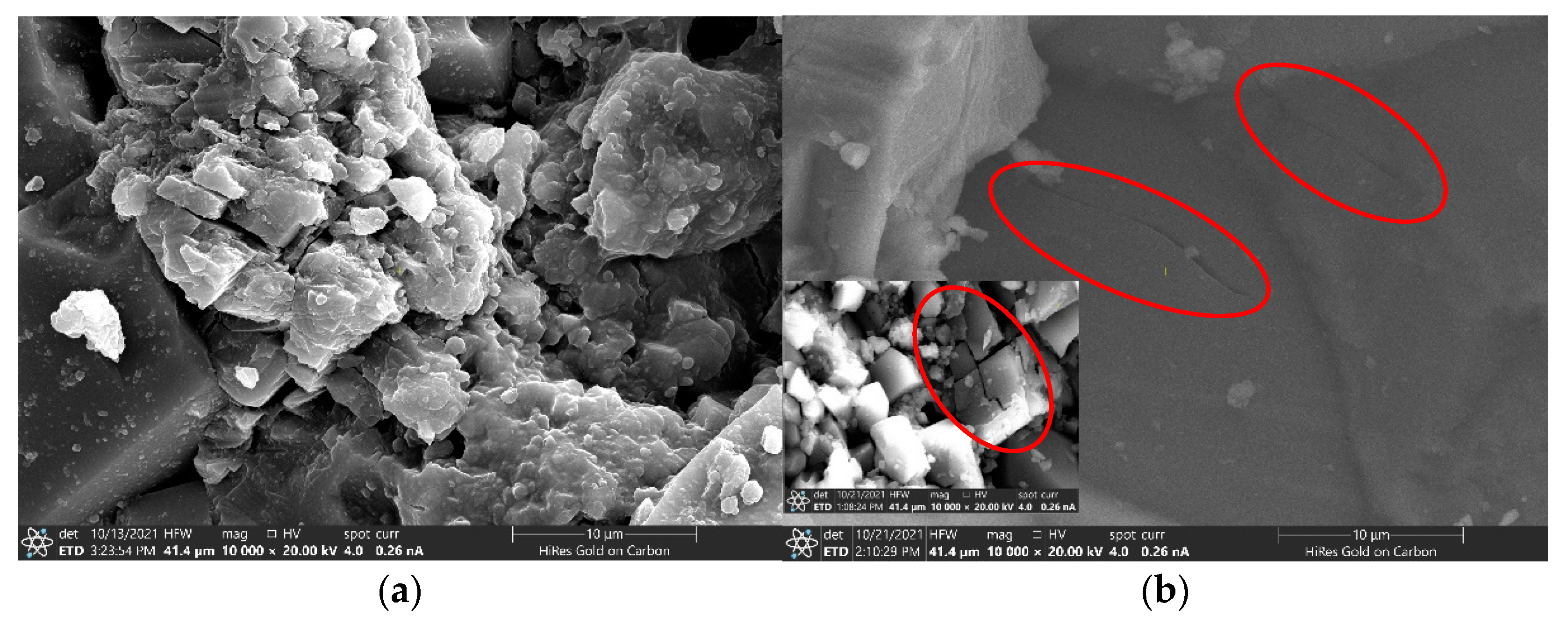
| Loading frequency f, Hz | 0.1 | 0.5 | 1 | 2 | 5 | 10 | 20 | 40 | 60 |
| Number of cycles N | 10 | 25 | 50 | 50 | 100 | 200 | 500 | 1000 | 1000 |
Publisher’s Note: MDPI stays neutral with regard to jurisdictional claims in published maps and institutional affiliations. |
© 2021 by the authors. Licensee MDPI, Basel, Switzerland. This article is an open access article distributed under the terms and conditions of the Creative Commons Attribution (CC BY) license (https://creativecommons.org/licenses/by/4.0/).
Share and Cite
Riabokon, E.; Turbakov, M.; Popov, N.; Kozhevnikov, E.; Poplygin, V.; Guzev, M. Study of the Influence of Nonlinear Dynamic Loads on Elastic Modulus of Carbonate Reservoir Rocks. Energies 2021, 14, 8559. https://doi.org/10.3390/en14248559
Riabokon E, Turbakov M, Popov N, Kozhevnikov E, Poplygin V, Guzev M. Study of the Influence of Nonlinear Dynamic Loads on Elastic Modulus of Carbonate Reservoir Rocks. Energies. 2021; 14(24):8559. https://doi.org/10.3390/en14248559
Chicago/Turabian StyleRiabokon, Evgenii, Mikhail Turbakov, Nikita Popov, Evgenii Kozhevnikov, Vladimir Poplygin, and Mikhail Guzev. 2021. "Study of the Influence of Nonlinear Dynamic Loads on Elastic Modulus of Carbonate Reservoir Rocks" Energies 14, no. 24: 8559. https://doi.org/10.3390/en14248559






